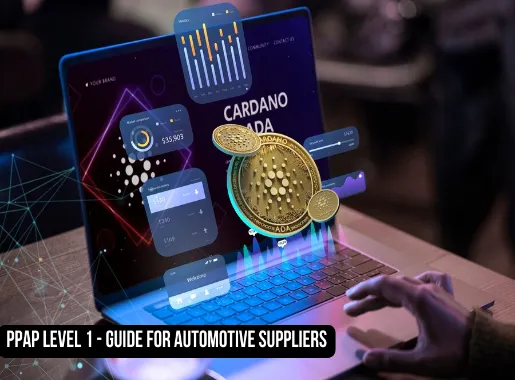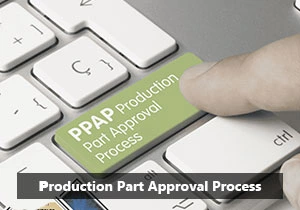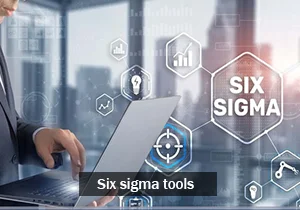Level 2 Ppap - Comprehensive Guide
PPAP, or the Production Part Approval Process, is a cornerstone in the automotive industry, ensuring that parts meet stringent quality and reliability standards. Within this framework, various levels of documentation and validation exist, with Level 2 PPAP being a focal point of this blog. Level 2, a more detailed examination than Level 1, requires specific documents, including design records and material certifications. Understanding and implementing Level 2 PPAP effectively is crucial as it reinforces the quality assurance process and streamlines supplier-client relationships, ultimately leading to enhanced product integrity and customer satisfaction in the automotive sector.
What is Level 2 PPAP?
Level 2 PPAP, as defined by industry standards like IATF 16949, represents a moderate level of documentation and validation in the Production Part Approval Process. It is typically required for general submissions where there is confidence in the supplier's quality and manufacturing processes.
Key Components of Level 2 PPAP Submission:
- Part Submission Warrant (PSW): This critical document summarizes the entire PPAP package and includes declarations from the supplier. The PSW confirms that the supplier understands the requirements and has checked that all specifications have been met. It's a declaration of conformity to all customer specifications.
- Product Samples: For Level 2, a specific number of product samples must be provided. These samples are used to validate that the production process consistently produces parts that meet all specifications and quality requirements.
- Limited Supporting Documentation: Unlike Level 3, Level 2 requires fewer documents. Essential paperwork includes dimensional results, which verify the product's physical specifications, and material certifications, ensuring materials meet predefined standards.
Differentiating Level 2 PPAP:
- Comparison with Level 1: Level 2 requires more documentation than Level 1. While Level 1 primarily involves a basic submission for review, Level 2 includes the physical submission of product samples and limited supporting documentation.
- Comparison with Level 3: Level 3 PPAP is more demanding than Level 2. It requires a complete PPAP submission, including full design records and additional documentation not necessary for Level 2.
Understanding the specific requirements and complexity of Level 2 PPAP is crucial for suppliers in the automotive industry. It ensures a streamlined process that validates the quality of parts without the extensive documentation needed for higher PPAP levels.
Have a deep understanding of the Production Part Approval Process (PPAP).
Advantages of Implementing Level 2 PPAP
Maximizing Benefits for Suppliers and Customers
- Reduced Lead Time and Cost: Level 2 PPAP simplifies the approval process by focusing on essential documentation and initial production verification. This reduction in documentation complexity directly translates to shorter lead times and lower costs associated with the PPAP process.
- Improved Efficiency: By streamlining the approval process, Level 2 PPAP minimizes potential delays. Suppliers can more quickly receive approval, and customers benefit from faster time-to-market. This efficiency is crucial in the competitive automotive industry where time is often of the essence.
- Early Problem Identification: Level 2 PPAP facilitates the early detection of potential issues. By examining key samples and initial documentation, both suppliers and customers can identify and rectify problems before full-scale production begins, saving time and resources in the long run.
- Enhanced Communication and Collaboration: This level of PPAP promotes transparency between the supplier and customer. With clear, focused requirements, both parties develop a better understanding of expectations, fostering trust and improving the overall relationship.
- Quality Assurance: Although less extensive than higher PPAP levels, Level 2 still provides a robust framework for quality assurance. It ensures that the parts meet the necessary standards without overwhelming the supplier with excessive documentation.
- Flexibility: Level 2 PPAP offers a balance between thoroughness and flexibility. It is particularly beneficial for suppliers with a proven track record, as it acknowledges their quality history while still maintaining essential quality checks.
By adopting Level 2 PPAP, both suppliers and customers in the automotive industry can enjoy a harmonious balance of efficiency, cost-effectiveness, and quality assurance. This level offers a pragmatic approach to part approval that suits a wide range of production scenarios.
You can also read about the New Product Introduction (NPI).
Implementing Level 2 PPAP Effectively
Key Steps for a Successful Level 2 PPAP Submission
- Understand Customer-Specific Requirements: Begin by thoroughly understanding the specific needs and expectations of your customer. Each automotive manufacturer may have unique requirements that go beyond the standard Level 2 PPAP guidelines. Review these requirements carefully to ensure full compliance.
- Prepare Accurate Documentation: Ensuring that your documentation is accurate and complete is crucial. Level 2 PPAP typically requires a Part Submission Warrant (PSW), product samples, dimensional results, and material certifications. Double-check each document for accuracy and completeness before submission.
- Efficient Production Run and Data Collection: Conduct your initial production runs efficiently to gather the necessary data. Ensure that these runs realistically represent your normal manufacturing process so that the data collected is relevant and accurate.
- Effective Communication with the Customer: Maintain open and clear communication with your customer throughout the PPAP process. Regular updates and prompt responses to queries can help in building trust and facilitating a smoother approval process.
- Review and Revise as Needed: Be prepared to review and revise your submission based on feedback from the customer. Flexibility and responsiveness to feedback are key in achieving approval.
- Internal Quality Checks: Before submitting your PPAP package, conduct internal quality checks to ensure that every part of the process meets the required standards. This proactive approach can help identify and resolve issues before they reach the customer.
- Leverage Expertise: If you’re new to PPAP or Level 2 requirements, don’t hesitate to seek advice from experts or consultants who specialize in this area. Their insights can be invaluable in ensuring a successful submission.
By following these guidelines, suppliers can effectively implement Level 2 PPAP, leading to a smoother approval process and a stronger partnership with their customers. Remember, the goal of PPAP is not just compliance, but also demonstrating your commitment to quality and reliability in automotive manufacturing.
Trust us for your success!
To successfully navigate the complexities of Level 2 PPAP in automotive manufacturing, consider the support of our Production Management Solutions Our expertise in documentation and process validation can be invaluable, ensuring your submissions meet the rigorous standards of the industry. Embrace their guidance to elevate your quality assurance practices, streamline your PPAP process, and foster stronger customer relationships. Trust us to drive your success in automotive manufacturing excellence.


